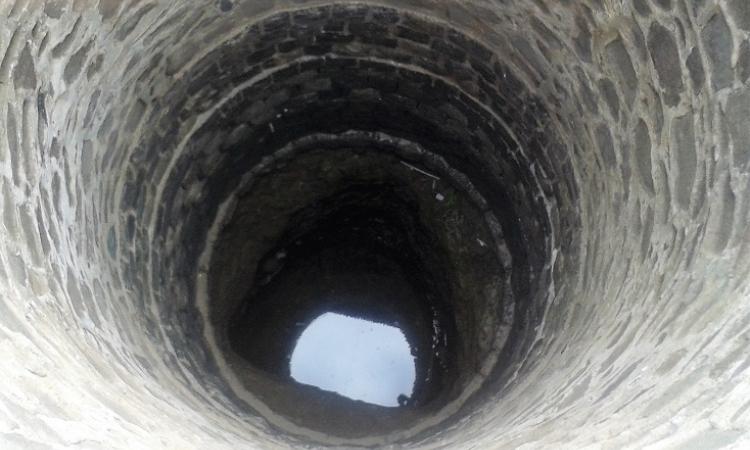
Groundwater reserves are depleting at rapid rates in India, which is one of the world’s largest consumer of groundwater with it providing 60 percent of the irrigation needs of the country.
Expansion of tubewells since the 1960s has helped in increasing cropping intensity by enabling farmers to sow crops in all the seasons - especially during the dry winter and summer seasons. This has led to massive food production gains over the past 50 years making India the second largest producer of wheat and rice world over! However, all this could change with the increasing threat of rapidly declining groundwater levels in India!
A paper titled ' Groundwater depletion will reduce cropping intensity in India' in the journal Science Advances informs that while the negative impacts of groundwater depletion on food security are being widely discussed, the extent of crop production loss and viable adaptation strategies remain unexplored. This information is critical for designing policy interventions that will help India maintain production levels in the face of groundwater depletion.
The paper discusses the findings of the study that compares winter cropped area in the country using satellite data with high-resolution village-level census data on the amount of shallow wells, deep wells, and surface water irrigation sources in each village. While all farmers plant crops during the monsoon season, few farmers plant crops during the dry summer and winter and depend on groundwater for irrigation. The study aims at:
- Understanding the impact of groundwater versus canal irrigation on winter cropped area and its resilience to rainfall variability across regions in India
- Effects of irrigation sources on extent of winter cropped area indicating irrigation equity across villages
- Impacts of groundwater depletion on winter cropped areas and the effectiveness of canal irrigation as an alternative to groundwater irrigation
The study finds that:
Farmers with tube wells are more likely to plant crops in winter
Farmers depending on tubewell irrigation are more likely to plant crops in the winter growing season while farmers in canal-irrigated villages are 52 percent less likely to plant winter crops.
A higher proportion of cropped areas in villages where farmers depend on tubewells grow a winter crop and there is less variability in cropped area by monsoon as compared to farmers using canals and dug well as irrigation sources.
Canal irrigation leads to inequity in access to water
Canals are associated with increased inequity in winter cropped area. Groundwater may lead to a more equitable distribution of irrigation across villages, as tubewells are available at a more decentralised level than large-scale canal projects.
Distance to canal is found to influence cropped area with more the distance the less the access to water leading to less cropped area and more sensitivity to rainfall variability in canal-irrigated villages.
Canal irrigation, a poor substitute for groundwater irrigation in groundwater depleted regions
Canal irrigation cannot substitute for groundwater irrigation in critically depleted regions that show long-term declines in groundwater levels and are expected to face the highest levels of groundwater stress.
Approximately 13 percent of the villages in which farmers plant a winter crop are located in critically depleted groundwater regions, and these villages may lose 68 percent of their cropped area if access to all groundwater irrigation is lost. Thus national winter cropped area may decrease by 20 percent if farmers lose access to groundwater in these critically depleted regions.
Winter crop losses will be more in north and central India
Crop losses will largely occur in northwest and central India and any potential gains from switching to canal irrigation in South India are not enough to offset these large losses .
Even if all regions using depleted groundwater for irrigation switch to canal irrigation, cropping intensity may decline by 7 percent nationally and 24 percent in these regions. It will also increase the sensitivity of agricultural production to rainfall variability and increase disparity in irrigation access across villages. These changes can have a severe impact on household incomes leading to increased rural poverty and rural health due to reduced household dietary diversity.
Canal irrigation cannot substitute groundwater irrigation!
Canal irrigation as a substitute irrigation source to groundwater will not be enough to maintain current production levels in the face of groundwater depletion and may serve as a viable substitute for groundwater irrigation only in certain parts of the country such as the western Indo-Gangetic plains and South India.
However, use of canals for irrigation in South India will not be able to compensate for production in Central and North India as south India produces only a small fraction of the nation’s winter crop, while most of the wheat is planted in Central and North India.
Thus moving away from groundwater to canal irrigation in the future could lead to a major crisis in India - that continues to be the second largest producer of wheat globally, which provides almost 20 percent of household calories across the country.
Replacing one source by the other: Not the solution, managing demand is!
Groundwater is thus critically important for agriculture in India. Adaptation strategies and and policy interventions that help reduce groundwater demand are urgently needed along with canal expansion to cope with the impending groundwater crisis!
These can include switching to less water-intensive cereals, promoting field-level water use efficiency by using water-saving technologies like sprinkler and drip irrigation, which can help use the limited groundwater resources more efficiently and effectively, argues the paper.
/articles/managing-groundwater-demand-way-forward